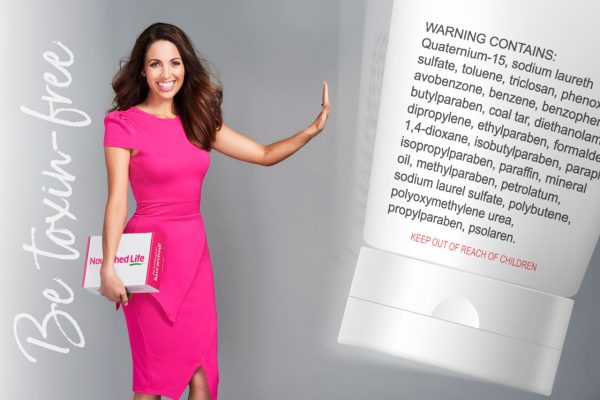Plastic cling wrap, it’s a staple in most kitchens, and while it may save your sandwich, it’s also an environmental nightmare.
Because it’s thin and flimsy, cling wrap is nearly impossible to recycle. It often slips through sorting machines, contaminates other materials, and ends up clogging equipment.
Even if you do the right thing, most recycling centres won’t accept it, and if it goes to landfill or incineration, the PVC and PVDC in many cling films can release dioxins, highly toxic chemicals linked to long-term health and environmental harm.
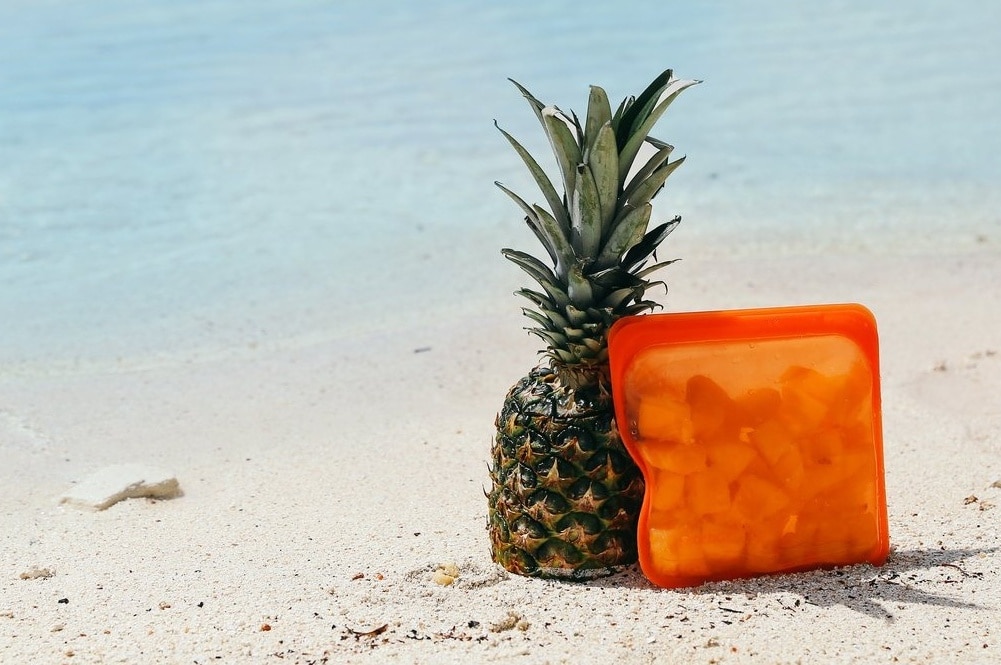
Why Ditch Plastic Cling Wrap?
Then there’s the microplastic problem. Once cling wrap escapes into the environment, via bins, breezes, or broken systems, it doesn’t biodegrade. It just fragments into smaller and smaller pieces that end up in waterways, soil, and oceans. Marine animals often mistake these plastic shreds for food, which can lead to injury or death, and ultimately work their way up the food chain.
The bigger issue? We use cling wrap for moments, to cover a bowl, wrap a sandwich, or save half an avocado. But the plastic it’s made from will outlive all of us.
There are plenty of better options now. Compostable, reusable, or both, and most of them actually work better than the old plastic roll. Keep scrolling for five simple swaps that can help you cut cling wrap for good.
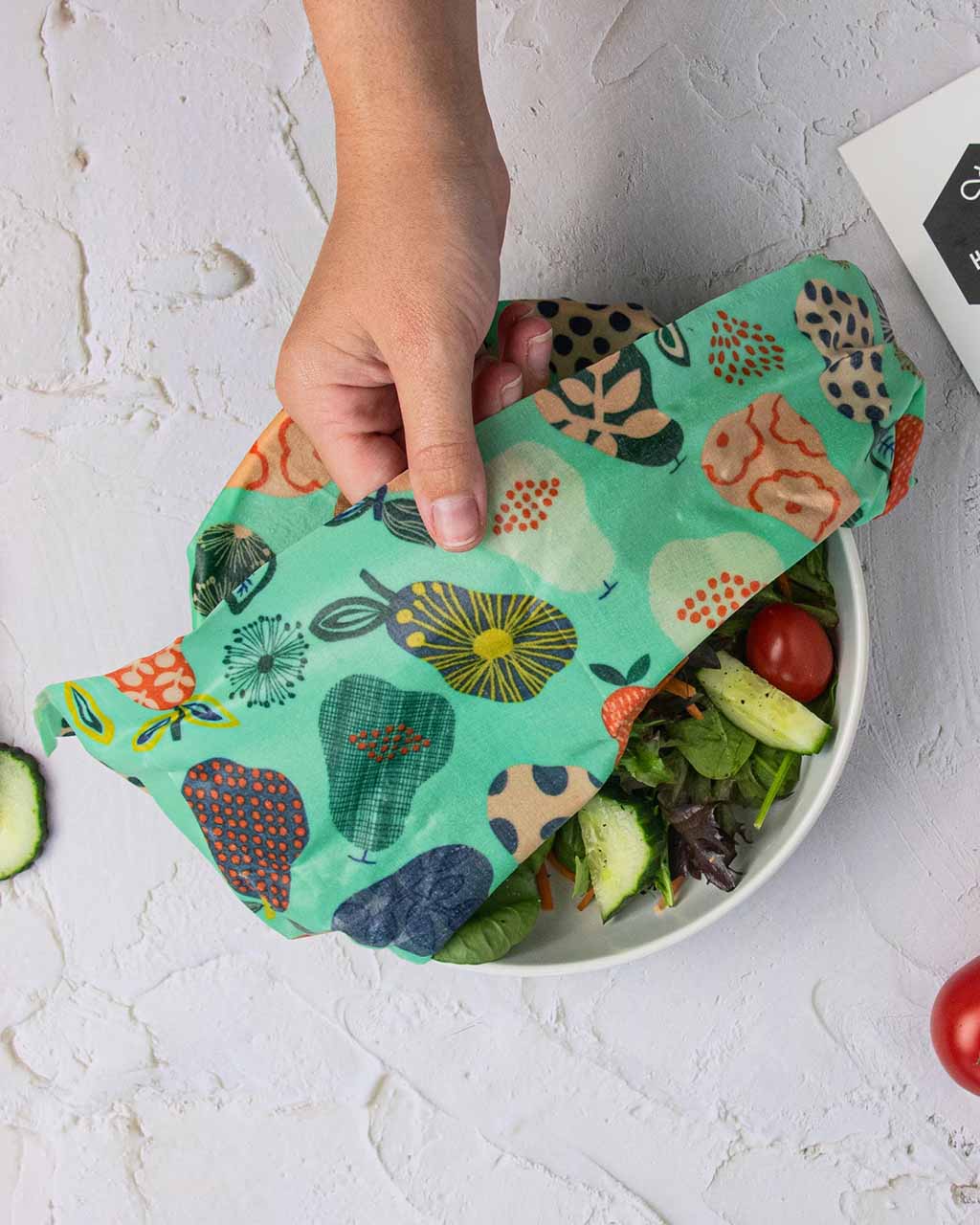
1. Wax Wraps
Wax wraps are arguably one the most versatile cling wrap alternatives. They come in an array of sizes and can be used to wrap sandwiches, cheese, most solid foods, also cover bowls, or folded down to create a little pocket or pouch for snacks. Beeswax is traditional wax used but there are also vegan-friendly options available.
Wax wraps are a great low-waste option because they can be re-waxed or composted in your home compost at the end of their life.
My picks:
I own and love this wax wrap set from Biome, I’m on year two, and they’re only just starting to lose their stickiness
And if you’re up for a DIY, here’s a great how-to for making your own beeswax wraps at home.
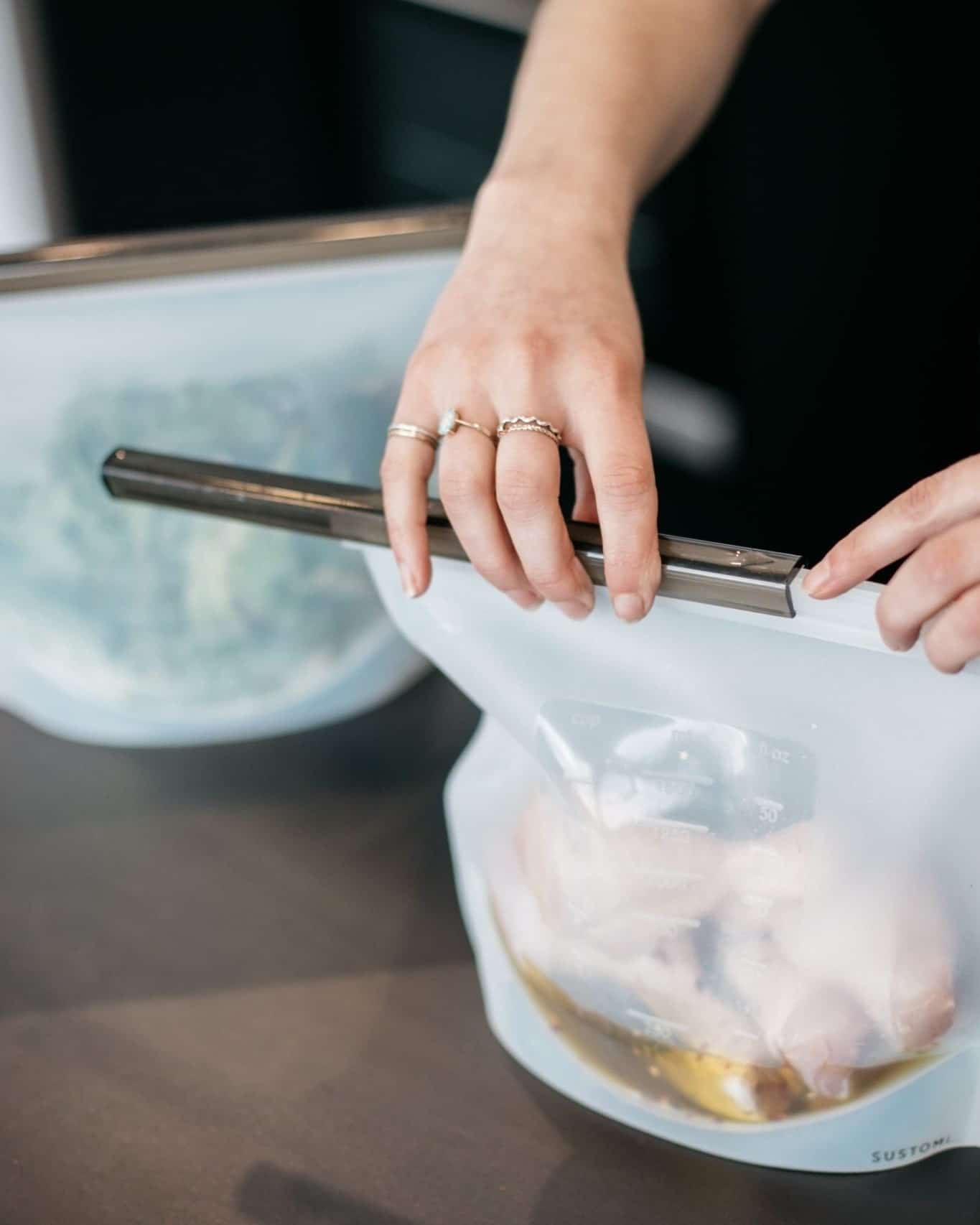
2. Silicone Pouches
Your plastic zip lock bag replacement – only better! Silicone pouches seal airtight so they can be used for chopped up food, leftovers, dry foods, and even storing liquids. They’re heat safe so can be used in warm water to defrost food in the microwave or hot water, and they’re dishwasher safe.
I use mine to freeze just about any fruit or veg that’s going bad – food saver tips here – I also freeze meat and store stews and curries in the fridge and freezer.
I also like to use them for buying dry food at the bulk store when I don’t want to take a giant bag of heavy jars.
My picks:
Sustomi is my go-to brand – they come in a variety of sizes and they offer packs to save a little bit of money. Use the code thegreenhub for 10% off your first order.
I haven’t tried them yet, but I’ve heard good things about Stasher.
3. Food Huggers
Exactly as the name suggests, these little guys hug your food. You pop them on the ends of fruit and veg like half lemons or avocados. The silicone cover seals in the natural juices and protects it from air exposure.
My picks:
I own this set but to be honest, every brand I’ve come across is comparable quality-wise. You can find them at Kmart and even Bunnings.
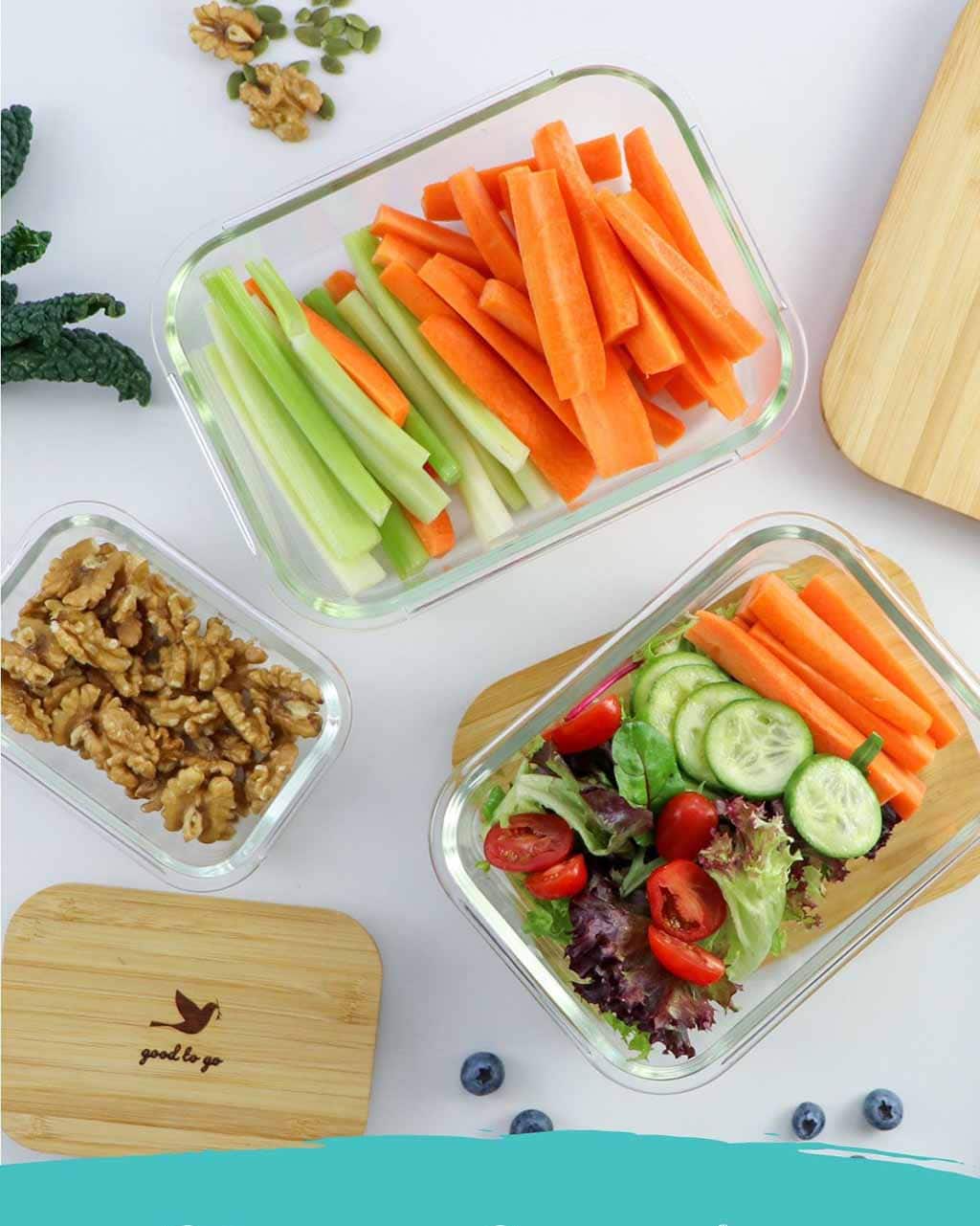
4. Containers or Jars
You can’t go past a trust old container. The most sustainable item is the one you already own, and my 10+ year Systema containers from Woolies are still going strong. I also use any jar I can get my hands on, old peanut butter jars are pretty great for spring leftovers.
Though if you are trying to avoid plastic glass containers, bamboo lids are a bit pricier but a good quality and long-lasting alternative.
My picks:
Biome has an impressive and affordable selection of glass storage solutions.
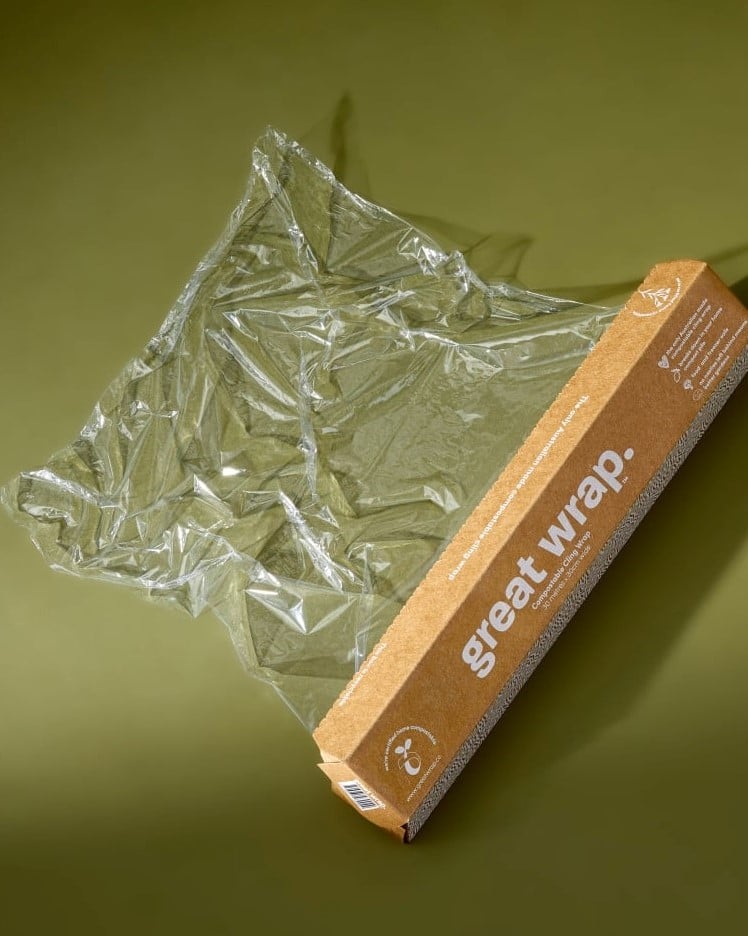
5. Compostable Cling Wrap
The most affordable of the bunch, sometimes only cling wrap will do, so why not make it compostable? It’s important to note here that you should check the label to ensure that it’s home compostable.
Biodegradable, degradable, or commercially compostable mean it will only break down in certain conditions at a very high temperature. So there’s no point chucking in the backyard compost bin.
My picks:
I use this one from Woolies and Great Wrap do rolls in different sizes.
What to Look for in a Plastic-Free Food Wrap
Not all plastic-free wraps are created equal, and “compostable” doesn’t always mean it can go in your backyard compost.
If you’re picking up a wrap that says “compostable,” flip the box and look closely. Some wraps only break down in commercial composting facilities, and won’t break down properly in your home compost bin. If it says “home compostable”, that’s your green light to throw it in with your veggie scraps.
If you’re not sure whether a wrap can go in your compost bin, look for one of these logos:
Home Compostable:
- AS 5810: Australian standard for home composting
- OK Home Compost (from TÜV Austria): accepted globally, works in most backyard composts
These wraps can safely go into your home compost or worm farm.
Commercial Compostable:
- AS 4736: Australian standard for industrial composting
- OK Compost Industrial: needs a commercial compost facility (not for home bins)
Unless your local council accepts these, they’ll usually end up in landfill.
If it has no label, assume it’s not compostable, especially if it’s vague or just says “eco” or “plant-based.” Claims like “biodegradable” without any certification mean very little.
For the easiest low-waste option, look for:
- Home compostable wraps made from plants or starches
- Reusable options like beeswax wraps, fabric bowl covers or silicone lids
- Minimal or recyclable packaging
FAQs
Q: Can you recycle plastic cling wrap in Australia?
A: Not in most curbside bins. It often ends up in landfill or causes contamination in recycling streams.
Q: What’s the most eco-friendly cling wrap alternative?
A: Reusables like beeswax wraps or silicone lids are best. Compostable wraps are good if they’re certified home compostable.
Q: Is compostable cling wrap really compostable?
A: Only if it’s certified (look for “AS 5810” or “OK Home Compost”). Otherwise, it may need industrial composting or go to landfill.


